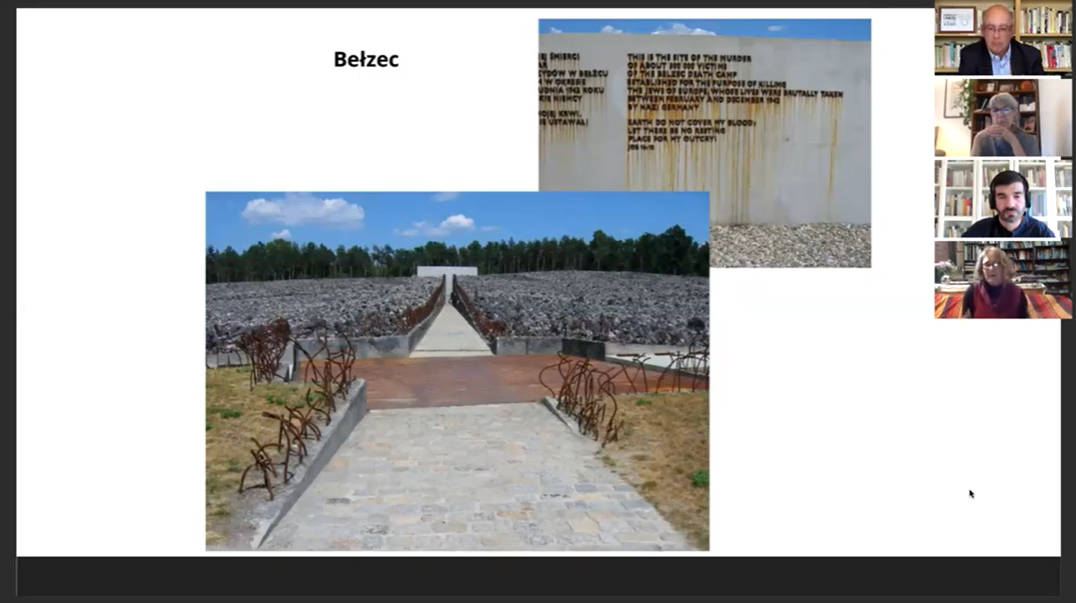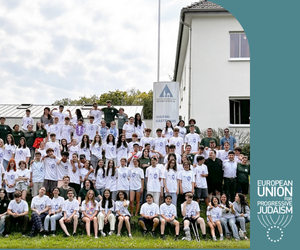Let’s Not Save All Synagogues
By Bill Echikson, EUPJ Brussels Director
More than 3,000 synagogues dot Europe’s countryside and cities. Many are abandoned. The Jews who used them were murdered or emigrated. Some lie in ruins; others have been transformed into cafés, sports halls, shops, and even a saloon, in one case.
Yet, the solution is not to rebuild and reconstruct every ruin, according to a panel of experts assembled for the European Union for Progressive Judaism’s latest webinar.
Taking place just before Shavuot, when Moses received the Ten Commandments, our discussion focused on the Ten Commandments for Jewish Heritage, a provocative list drawn up by Sally Berkovic, the CEO of the Rothschild Foundation. We focused on four of these commandments.
• One: “Thou shalt not treat every old, derelict synagogue as sacrosanct.”
• Two: “Thou shalt draw on the stores of knowledge contained in Jewish cemeteries and be programmatic about their ongoing preservation.”
• Six: Thou shall not make it cool to visit the death camps.
• Ten: Thou shalt acknowledge and support the selfless individuals caring for Jewish heritage.
Panellists included Ruth Ellen Gruber, author of several books on the topic. She also manages the Jewish Heritage Europe website, a project of the Rothschild Foundation (Hanadiv) Europe. Ruth and I met in the 1980s after the communist Polish government expelled her for her fearless journalism. She now splits her time between Budapest, Italy, and the United States. Helise Lieberman, director of the Taube Center for the Renewal of Jewish Life in Poland Foundation, presented a perspective from Warsaw, and Victor Sorenssen, director of the European Association for the Preservation and Promotion of Jewish Culture and Heritage (AEPJ) spoke from Barcelona.

Top L-R: Helise Lieberman and Bill Echikson
Bottom L-R: Victor Sorenssen and Ruth Ellen Gruber
Europe’s synagogues are in danger from north to south, east to west, particularly in the countryside. It would be impractical and wasteful to renovate all of them, the panellists agreed. It is wiser to concentrate on renovating architecturally- or historically-significant buildings and making sure that there’s a plan to use the renovated spaces in an appropriate manner.
Hard ‘life-or-death’ choices must be made. Gruber described a current dilemma in Belarus, where three former synagogues recently went up for auction. These included the important Great Synagogue in Slonim, which has been the focus of attempts at restoration for decades. It was bought at auction by a musician/writer from Minsk, but restoration will need enormous funding and under the purchase conditions, must be completed in five years. The Great Synagogue is worth saving. However, this is not the case for two isolated, difficult-to-reach, countryside former synagogues, which have been used for decades for other purposes and bear little, if any, sign that they were once shuls.

While Gruber believes the transformation of the synagogue in Chelm, Poland, into a western-style saloon was not an appropriate use of the building, there is now little chance for it to be restored in a different way. The outer wall of the synagogue does bear a plaque about the building’s history, which in some small part restores its memory and the memory of the lost Jewish community.
“This is not the ideal solution, but at this point I don’t know what else could have been done with the building,” said Gruber. “Chelm is a small town in southeast Poland without any Jews, and this at least keeps the identity.”

In contrast to synagogues, Jewish cemeteries are sacred, even after being abandoned. They should be respected and restored. The European Jewish Cemeteries Initiative erects fences to protect cemeteries from vandalism. Gruber has documented the iconography of Jewish headstones marking the graves of women on her blog, candlesticksonstone.wordpress.com. At www.billiongraves.com, you can collect photos of the headstones in your local cemetery with a phone app and upload them.
“Cemeteries narrate the story of a community,” explained Lieberman. “For me, if there are five or six places that you have to visit in Jewish Warsaw, one is the Okopowa Cemetery. It survived the war. The tombstones tell the story of who we are as Warsaw Jews,” she said, describing how the Jewish community has resisted attempts by developers to turn some abandoned cemeteries into shopping malls.

In Barcelona, the medieval Jewish cemetery is located on the Montjuic hill, literally Jewish Mountain, Sorenssen said. Montjuic is now home to sports facilities built for the Olympics and art museums.
“Jewish tombstones were reused for building purposes, from the 16th and 17th centuries, all around the city as bricks,” Sorrenssen said. “We cannot find any explanation, any context.” Religious objections prevent archaeological research. “The result,” he said, “is a good mess.”
Death camps raise other sensitive questions. Auschwitz has become a major “tourist” attraction, welcoming more than 2.5 million visitors a year before COVID-19. Often, people take selfies that don’t give the places the respect they deserve. All the panellists stressed that Jewish identity must not be limited to Holocaust remembrance. Visits to Auschwitz can be constructive, if handled sensitively. Panellists agreed that additional attention should be given to less well-known camps such as Belzec.

“Everyone on a tour that I led a few years ago wanted to go to Auschwitz because that’s where you have to go,” said Gruber. “But I tell people they should visit Belzec, another death camp, which has an extraordinary memorial. However, it’s not that easy to get to and few people go there.”
Our discussion concluded with the panel paying tribute to the individuals who care for Europe’s Jewish heritage: the old man caring for an abandoned Jewish cemetery, the archivist safeguarding documents testifying to a town’s Jewish history, and the historians gathering oral testimony. Many are not Jewish. The older generation of such activists is now passing away, but the list of unsung heroes lengthens. Still, reinforcements are required.
Without a strong commitment from them and from Europe’s Jews, the outlook for the continent’s Jewish heritage looks bleak. It is up to all of us to stand up wisely and preserve it.
This article was first published in The Times of Israel.








